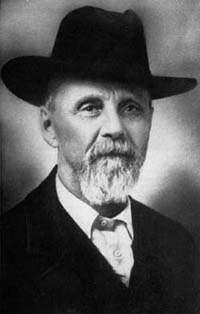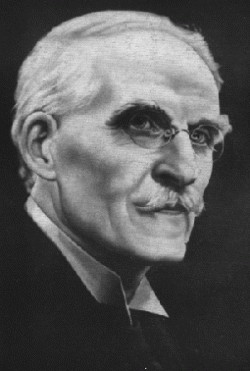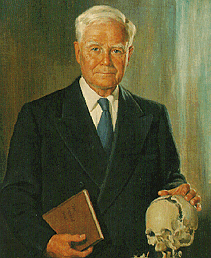History of Osteopathy
Three important men made the History of Osteopathy. The first one , Andrew Taylor Still who is the founder of it; John M. Littlejohn who kept on the work started by Still by adding more physiology ; and William G. Sutherland who introduced Cranial Field in Osteopathy.
Andrew Taylor Still

Born in 1928 in the United States. He was raised in a family of pioneers in the Midwest. Medicine was very limited in those areas. He learnt some medical knowledge from his father who was a Methodist preacher. He also had some contacts with native American (Shawnees). Later on, he studied some engineering in the field of agriculture. That interest for mechanics and how things work, will be a key principle in his understanding of Osteopathy.
He was a doctor and also fought during the Civil War. Then a terrible event occurred to him: he lost family members from the meningitis. At that time, Modern Medicine was unable to cure that disease. This event was a major shift. Combined to his faith in God, he was convinced that if God created disease, It would also had created a way to heal. This was the beginning of his obsessional search to find a new medicine.
He intensively studied anatomy and the way the body functions. His previous engineering studies was a huge help to see the whole body as a mechanism functioning as a whole.The legend says it wasn’t rare to see Doctor Still stopping somewhere and taking some bones from his bag to study it more as some thoughts came into his mind. He decided to study medicine but he never finished it. In 1874, during some an epidemy of dysentery (fatal illness), he successfully treated a child, then another one, and more.
On June 22nd of 1874, he had the revelation that he discovered a new powerful medicine which combine anatomy, physiology, philosophical principles and manual techniques. Doctors and members of the clergy were hostile to his medicine, but that didn’t stop him. He became famous beyond Kansas and Missouri. The flow of patients was too important. Transmission appeared as a necessity. So he decided create the American School of Osteopathy in Kirksville (Kansas) in 1892 where he taught. Then, to old the « Old Doctor » decided to retire to write about Osteopathy.
John Martin Littlejohn (1865-1947)

He is an Englishman who studied theology, literature and medicine at the university. He had to leave England because of his health conditions and he moved to the USA. He heard about the miracles made by Dr Still, so he decided to get a session with him at Kirksville. Fascinated by this new medicine and its success, he decided to stay and to study Osteopathy. Still admires Littlejohn’s intellect and he offered him to teach Physiology.
However, major differences regarding of Osteopathy arose between them. Littlejohn left Kirksville to move to Chicago. Along with his brothers, he created the American School of Osteopathy Medicine and Surgery and published some documents. In 1913, he came back to England, but the World War I which postponed the creation of the British School of Osteopathy until 1917.
As a result of progress in research and science, Littlejohn continued Still’s work adding some science and medical view. He insisted in the importance of the environment on someone’s health.
Two of his great studies are the relation between section of the spinal cord and the innervation of organs; and on the other hand, the adaptation of the whole posture due to bipedalism.
William Garner Sutherland (1873-1954)

Sutherland is from the Midwest. He worked as an apprentice in a printing house before become a journalist. He heard about Osteopathy through his work so he decided to visit Still to make his own opinion. Once there, he saw so many people coming from far away to be treated by Still. The results and success of this medicine astonished him, so he decided to stay and learn Osteopathy.
While passing by a skull in the college’s corridor, he suddenly noticed that the different bones composing the skull where arranged in such a way that it might suggest a motion. This intuition that he called his “crazy idea”, will obsess him for many years, and it will be the beginning of an important anatomic research and experiences. Sutherland studied many disarticulated skulls and observed similarities on bones’sutures. The sutures’ shapes reminded him of the mechanism on printing machines when he was a journalist. He built a whole coherent model. He made the experimentation phase on his own skull which he compressed using different tools (bowls, baseball gloves, strings…) to create the exact same afflictions and symptoms he observed.
He developed osteopathy in the cranial field and published The Cranial Bowl. At that time, his method didn’t interest much of his peers and it stirred a lot of controversy in the profession. However cranial osteopathy solves problems that the “classical one” does not. Over the years, his technics are lighter, subtle and very precise. He preferred to work using the indwelling forces within the body than to apply exterior forces to release tensions.

